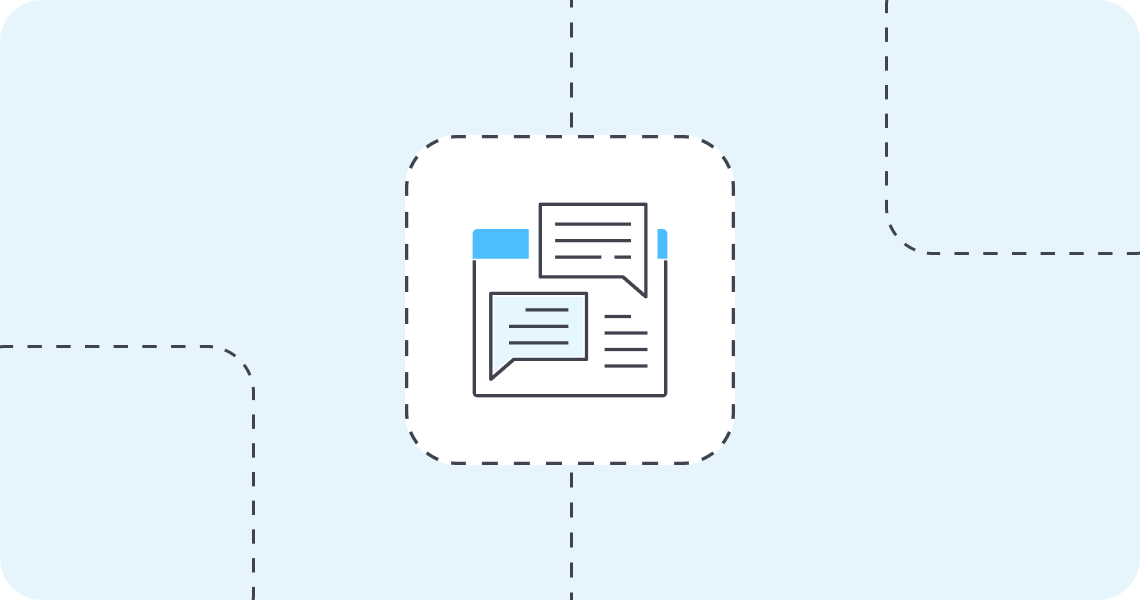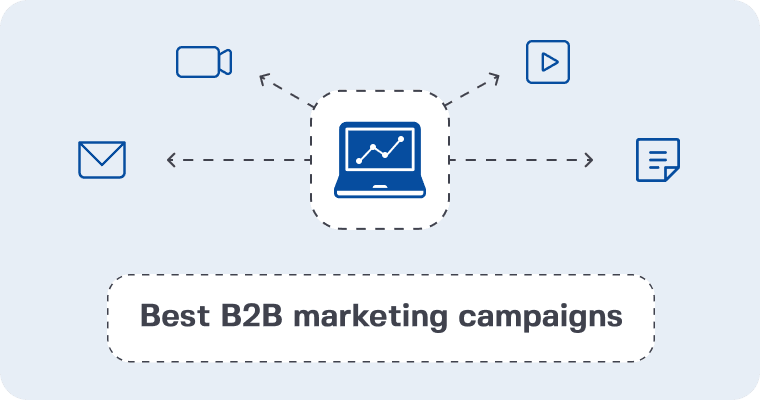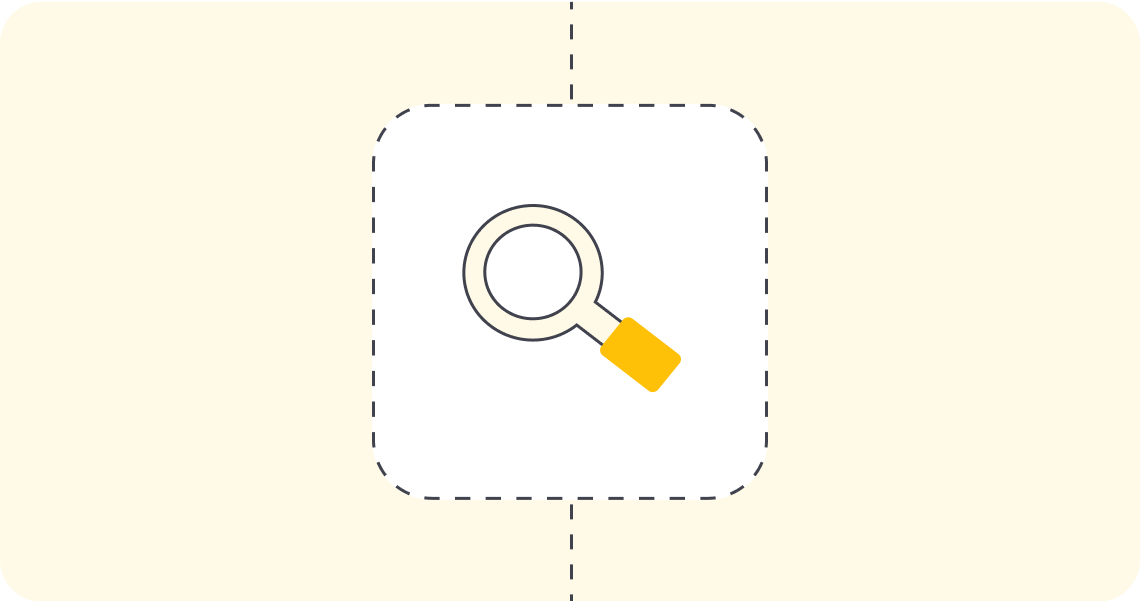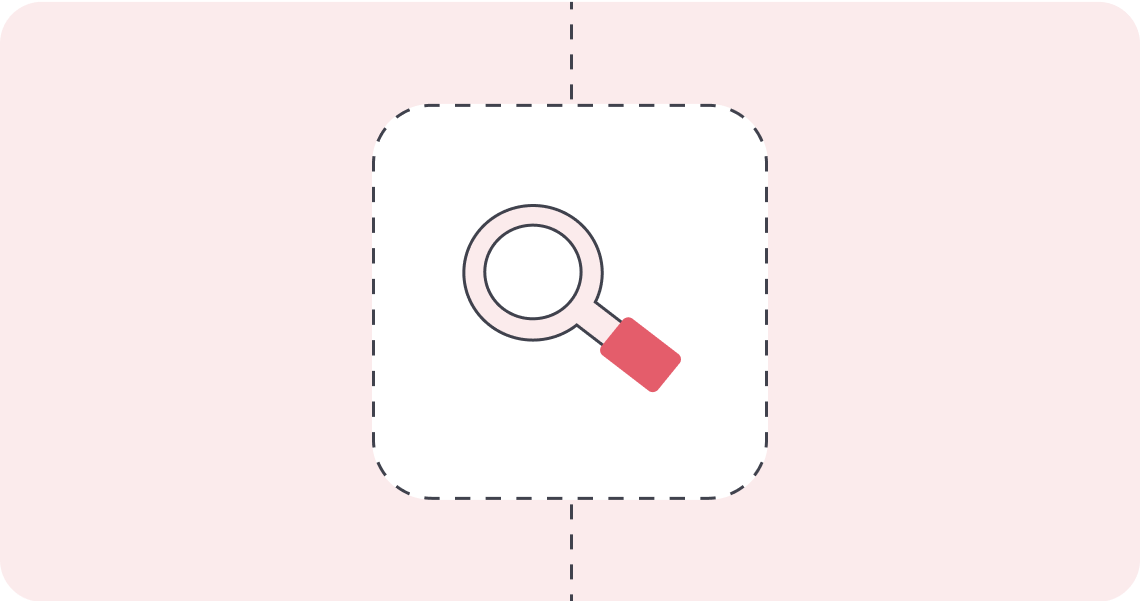Want to boost your B2B tech sales as part of your corporate marketing strategy? Try demand generation: the strategy that goes beyond the hard sell, nurturing your audience until they’re ready to buy. Learn how to make your tech product or service irresistible, turn leads into customers. Dive in now!
What is B2B Demand Generation?
Demand generation is about making your target audience aware of and interested in your product or service. It goes beyond just selling right away by incorporating demand gen strategies and best practices to create awareness, generate demand and hit your sales targets. Instead it guides potential customers, building their interest and connection to your solution before you make a sales pitch. It’s about showing your audience why they need your product even when they’re not looking for it.
B2B Demand Generation vs. Lead Generation
The terms ‘demand generation’ and ‘lead generation’ are often used interchangeably but they are fundamentally different approaches with different goals and challenges.
Lead Generation: Traditionally lead generation is about capturing as many leads as possible. It’s a numbers game where the primary goal is to fill the top of the sales funnel with potential contacts regardless of their immediate buying intent.
The common problems marketers face with this approach are:
- Low quality leads
- Long sales cycles
- Misaligned to sales goals
Demand Generation: Unlike lead generation, demand generation for B2B is a holistic approach that covers the entire marketing and sales funnel. It’s about creating awareness and demand for your product or service across the market.
Here’s how demand generation addresses the problems of lead generation:
- Improves lead quality: By educating and engaging potential customers through targeted content and strategic outreach demand generation attracts leads that are more informed and further along in their buying journey therefore improving lead quality.
- Shortens sales cycles: Continuous engagement strategies keep potential customers informed and interested and move them through the sales cycle faster. This is done by maintaining a consistent narrative that educates the prospect about the value and utility of the product or service.
- Enhances differentiation and market education: B2B demand generation services focus on establishing a company’s unique value proposition and thought leadership and help to differentiate in a crowded market.
- Aligns to sales objectives: Creates alignment between sales and marketing teams so efforts are focused on nurturing high value accounts and leads that meet specific sales criteria.
B2B Demand Generation Strategies and Tactics for Tech Marketers
Why Create Demand
Creating demand is a fundamental part of any business strategy especially in the competitive tech market. Demand generation goes beyond just lead acquisition; it’s about building a pipeline of potential customers who are interested in your product or service. By creating demand businesses can increase their brand awareness and visibility and make their offerings more visible and attractive to their target audience.
One of the biggest benefits of demand generation is customer engagement and loyalty. When you consistently deliver valuable content and solutions that solve your audience’s problems you build a relationship with them. This increases the chances of conversion and turns customers into brand advocates.
Also demand generation strategies lead to more sales and revenue. By nurturing leads through targeted content and personalized outreach you can move them through the sales funnel faster and get higher conversion rates. By creating demand businesses can get a competitive advantage by differentiating themselves in the market. It allows them to establish a unique value proposition that resonates with their audience and set themselves apart from competitors.
Knowing your audience is another key part of demand generation. By understanding their needs, preferences and pain points you can make your marketing more relevant and impactful. This targeted approach improves the customer experience and overall demand generation efforts.
In summary creating demand is key to business growth, brand awareness and customer loyalty. It gives you a competitive advantage and deeper understanding of your audience and leads to more sales and revenue.
Know Your Target Audience
Dig into your market research. Use tools like LinkedIn Sales Navigator to find companies that fit your ideal customer profile and platforms like Crunchbase to understand the funding stages and growth trajectory of those companies.
Listen in on social media where your target audience hangs out, on LinkedIn groups or tech forums to understand what’s top of mind for them. This will allow you to tailor your messaging to exactly what your audience needs. Also focus on generating qualified leads by vetting potential customers for buying readiness so your marketing efforts are targeted at the most promising prospects.
Content Marketing and Messaging
Create a content calendar that maps out topics to the different stages of the buyer’s journey. Use BuzzSumo to find trending topics in your industry for awareness stage content.
For consideration stage content focus on case studies and comparative analysis that showcase your product’s benefits. Use SEMrush to find SEO opportunities to get your content in front of your target audience.
For decision stage content create detailed whitepapers and product demos that highlight the unique selling proposition of your solution. Remember each piece of content should provide tangible insights or solutions and position your brand as a thought leader in your space. Adding demand generation tactics can further enhance your content strategy by educating your potential customers and refining your lead qualification methods.
Multi-Channel Marketing
Go omnichannel in your demand generation campaigns — use targeted LinkedIn ads to reach decision makers, Google Ads to capture search intent and consider account-based marketing platforms like Demandbase for personalized website experiences.
The Demand Generation Funnel
The demand generation funnel is a framework that outlines the journey of a potential customer from awareness to conversion. Knowing this funnel is key to developing demand generation strategies that move prospects through each stage.
The funnel has five stages:
- Awareness: At this stage potential customers become aware of your product or service. The goal here is to grab their attention through various marketing channels like social media, content marketing and paid ads.
- Interest: Once awareness is established the next step is to generate interest. This means providing valuable content that educates and engages your audience so they understand how your product or service can solve their problems.
- Consideration: At this stage potential customers evaluate your product or service against their needs and other options. Providing detailed information, case studies and comparisons helps them make an informed decision.
- Intent: Here potential customers have expressed a buying intent. This is the time to offer a compelling call-to-action, free trial or demo to get them to take the next step.
- Conversion: The final stage is where potential customers become paying customers. Make sure the buying process is seamless and easy to close the deal.
By understanding the demand generation funnel businesses can create targeted marketing campaigns that address the needs and behaviors of potential customers at each stage. This approach will not only make your demand generation more efficient but also more likely to convert leads into customers.
Measuring Your Results
Set up a solid analytics using Google Analytics for web traffic and engagement metrics and integrate with CRM systems like Salesforce to track lead quality and conversion rates. Use UTM parameters to track specific campaigns and channels. Hotjar can give you insights into user behavior on your website to identify areas to improve.
Don’t forget to review these metrics in team meetings to align on progress and areas to focus on. Also tracking marketing qualified leads (MQLs) is key to measure the effectiveness of your marketing in generating high quality leads.
Analyze and Optimize Your Demand Generation
Use data analytics platforms like Tableau to see all your campaign data in one place. This will allow you to see trends, patterns and outliers and make it easier to get insights. Test your emails, landing pages and ads with A/B testing to see what works best with your audience. Optimizely can help you with that.
Also do quarterly strategy reviews with sales feedback to ensure your demand gen strategy is aligned to on-ground reality and sales objectives.
B2B Demand Generation Cheat-Sheet for Tech Marketers
| ☑ | Get to Know Your Target Audience | • Use LinkedIn Sales Navigator & Crunchbase for research. • Listen to social media on LinkedIn groups & tech forums. • Tailor your messaging to the specific needs of your audience. |
| ☑ | Develop Your Content Strategy | • Create a content calendar aligned to the buyer’s journey stage. • Use BuzzSumo to find trending topics & SEMrush for SEO |
| ☑ | Multi-Channel Marketing | • Combine paid ads with organic promo and thought leadership. • Consider Demandbase for personalized website experiences. |
| ☑ | Measure & Analyze | • Set up Google Analytics and integrate with CRM like Salesforce. • Use UTM parameters for campaign tracking; Hotjar for user behavior. • Review metrics regularly to align on strategy. |
| ☑ | Optimize | • Use Tableau for data visualization & Optimizely for A/B testing. • Quarterly strategy reviews with sales feedback. • Refine based on data and sales insights. |
B2B Demand Generation Best Practices
- Optimize your website and app
- Use tools like Google Analytics or Clarity to see which pages your audience is paying attention to and where you might be losing them. Test A/B elements like CTAs, page layouts and messaging to continually refine the experience.
- Integrate AI-powered chatbots to answer visitor questions, guide them through your site and even qualify leads in real-time. This will improve the experience and increase engagement. To generate demand use targeted prospecting campaigns and measure KPIs to optimize your marketing.
- Nurture leads to build relationships
- Segment your leads based on their behavior, interests and stage in the buyer’s journey. This allows for more personalized and relevant communication.
- Multi-channel nurturing. Beyond email, consider nurturing through targeted social media ads, personalized video messages and even direct mail.
- Feedback loop with your sales team to refine your nurturing strategies based on direct feedback from prospects. This will ensure your nurturing is always aligned to the latest sales intelligence.
- Invest in content strategy
- Add interactive and gamification elements to your content strategy, quizzes, assessments and calculators.
- Encourage and showcase testimonials, case studies and reviews from your customers. Peer recommendations can influence B2B buying decisions and add credibility to your brand messaging.
- Become a thought leader in the industry — collaborate with industry experts, influencers and other thought leaders to co-create content.
- Set up marketing automation to scale personalization
- Use predictive lead scoring models that use AI to score leads based on their likelihood to convert. This will allow you to focus on the most promising prospects and improve conversion rates.
- Use marketing automation to deliver dynamic content that changes based on the viewer’s past behavior, preferences and stage in the buyer’s journey.
- Map out your customer’s journey to see every touchpoint with your brand. This will help you identify gaps in your strategy and opportunities to improve and ensure a seamless experience for your prospects.
Lead Qualification and Scoring
Lead qualification and scoring are critical to a demand generation strategy. These processes help you identify and prioritize the best leads so marketing and sales can focus on the most promising prospects.
Lead qualification is the process of evaluating potential customers based on specific criteria to see if they are a good fit for your product or service. This could be company size, industry and budget. By qualifying leads you can ensure your marketing is targeting individuals or companies that will benefit most from what you offer.
Lead scoring, on the other hand, assigns a number to each lead based on their behavior, demographics and engagement with your brand. This scoring system allows you to prioritize leads so your sales team can focus on the highest scoring leads who are most likely to convert. Factors that influence lead scores can include website visits, content downloads, email opens and social media interactions.
The benefits of lead qualification and scoring are many. They will improve conversion rates by ensuring your sales team is talking to leads that are more likely to buy. This targeted approach will increase sales and revenue as you’re focusing on the best opportunities. Lead qualification and scoring also gives you valuable insight into customer needs and preferences so you can create more effective and personalized marketing campaigns.
In short, lead qualification and scoring are key to your demand generation strategy. They help you prioritize, improve conversion rates and get to know your potential customers better.
CRM and Marketing Automation
CRM (Customer Relationship Management) and marketing automation combined is a big win for businesses looking to supercharge their demand generation. It allows for a smooth flow of information between marketing and sales so marketing can be more effective and personalized.
CRM software helps businesses manage customer interactions and data across the customer lifecycle. It’s a central repository of customer information including contact details, communication history and purchase behaviour. This data is gold for understanding customer needs and preferences so you can market more effectively to them.
Marketing automation, on the other hand, automates and optimises marketing tasks like email campaigns, social media posting and lead nurturing. It allows you to deliver personalised content and messages at scale based on customer behaviour and engagement.
CRM and marketing automation combined gives you several benefits. Customer engagement and loyalty increases as you deliver a more personal and consistent experience across all touchpoints. This leads to more sales and revenue as marketing is more aligned to customer needs and preferences.
Plus it makes marketing campaigns more efficient. By automating the mundane tasks and using customer data from the CRM you can create more targeted and effective campaigns. Time and resource saving and better demand generation overall.
In short, CRM and marketing automation is key to a demand generation strategy. It increases customer engagement, sales and efficiency of marketing campaigns and better business outcomes.
Demand Generation Mistakes to Watch Out For
Demand generation is a powerful way to grow your business but there are many common mistakes that can hold you back. Be aware of these and avoid them and you’ll have a better demand generation strategy.
- Not Knowing Your Target Audience: One of the biggest mistakes is not having a clear understanding of your target audience. Without this you’ll miss the mark and get low engagement and conversion rates. Do your market research and create detailed buyer personas so your campaigns are tailored to your audience’s needs and preferences.
- Not Having a Clear and Compelling Message: A generic or vague message will not grab the attention of your potential customers. You need to develop a clear and compelling value proposition that communicates the unique benefits of your product or service. This message should be consistent across all marketing channels so you can build a strong brand.
- Not Using Multiple Channels to Reach the Audience: Relying on one marketing channel will limit your reach and impact. A demand generation strategy uses multiple channels – social media, email, content marketing and paid ads – to touch potential customers at different touchpoints.
- Not Measuring and Analyzing: Without measurement and analysis you can’t measure the effectiveness of your demand generation. Use analytics tools to track lead quality, conversion rates and campaign performance. Review these regularly to see where you can improve and optimise.
- Not Continuously Optimising and Improving: Demand generation is not a one time effort but an ongoing process. Continuously test and refine your strategies based on data and feedback. Do A/B testing, get insights from your sales team and stay up to date with industry trends to keep your demand generation effective and relevant.
By avoiding these mistakes you’ll have a better demand generation strategy that drives revenue and growth. A well thought out and executed demand generation strategy not only attracts and converts but also builds market presence and long term customer loyalty.
In short creating demand is part of any business and understanding the demand generation funnel, lead qualification and scoring, CRM and marketing automation and avoiding the mistakes are all part of a demand generation strategy. By having a well thought out and executed demand generation strategy you’ll drive revenue and growth.
42DM’s Demand Generation Framework for B2B Tech Marketing
Our B2B demand generation funnel framework is based on five steps, each focused on a different part of your marketing strategy to drive success.
See our Demand Generation vs. Inbound: Framework for Paid Ads
1. Build Awareness
This is the foundation of everything that follows. Success here is all about an omnichannel media buying and content distribution strategy. We use a mix of channels – social media, search engines, industry publications and more – to get your brand in front of a big audience and do it cohesively and consistently. Get your brand seen and felt across all the platforms where your potential customers are.
2. Connect & Engage
Once awareness is built, the next step is to build a meaningful connection and stickiness to the brand. This is done through valuable content and relevant partnerships. We focus on quality and frequency over quantity, so every piece of content – blog post, whitepaper, webinar, case study – provides real value to your audience. This creates engagement and a community around your brand that’s interested and invested in what you have to say.
3. Catch the Demand
Now your audience is aware and engaged, it’s time to create demand by amplifying the pain points they’re experiencing and building the link between their explicit needs and your product solutions. This step is about integrating your product into your content strategy and supporting it across multiple channels with targeted remarketing campaigns. Get your product top of mind when they’re ready to buy.
4. Convert Demand into Opportunity
Conversion is where it all happens. When a potential customer is ready to buy your brand must be there to catch the demand wherever it comes from. This means making it easy for prospects to start the conversation with you. Have value-first conversion points in your Conversion Rate Optimization (CRO) strategy. This isn’t just about showing content value but product value and benefits, making the decision to engage with your brand a no brainer.
5. Close and Develop
The final step in our framework is closing the deal and developing the customer. Here the alignment between sales and marketing is key. A smooth handoff from marketing to sales ensures the momentum built through the demand generation is captured. Post sale the focus shifts to customer development – using the initial trust and rapport built to upsell and cross sell opportunities and maximise the lifetime value of each customer.
42DM’s B2B demand generation agency framework simplifies B2B tech marketing. With our 5 step approach you can attract, engage and convert your audience into customers.













